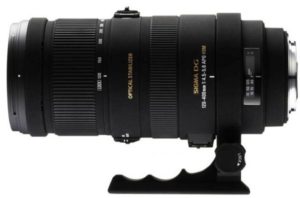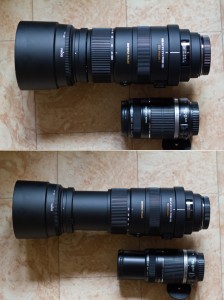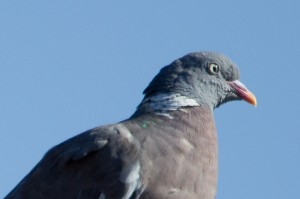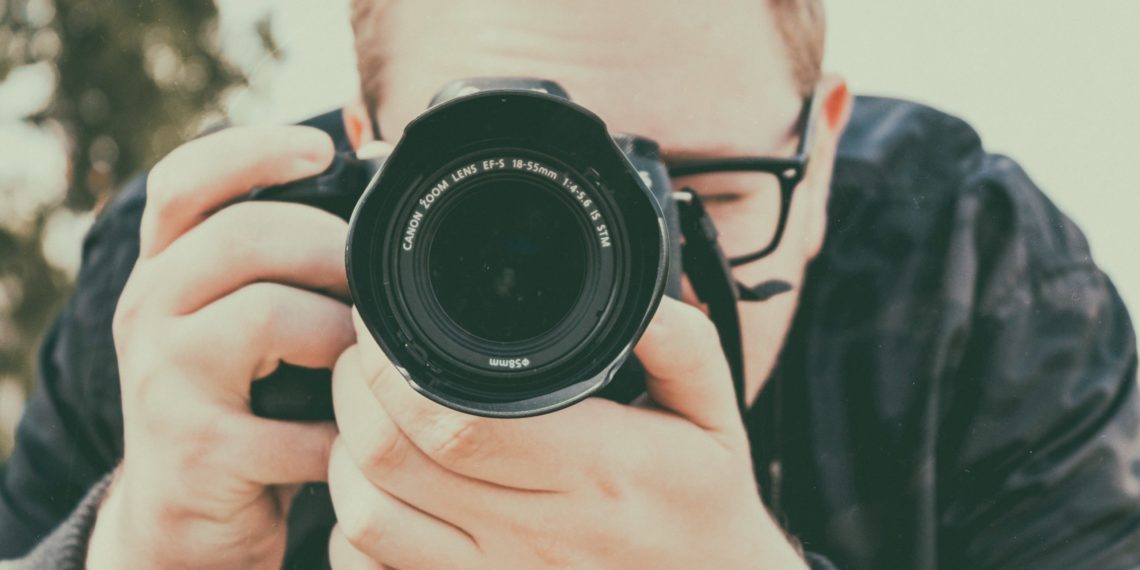I know that wildlife photography is a popular genre for some of you, and that’s why I wanted to have the Sigma 120-400mm f/4.5-5.6The zoom lens is typically designed for theanimalieror even the sport. So I asked Geek Trend to lend me the lens so I could see what he was up to.
I should point out that all the tests have been carried out on an Canon EOS 550Dand that you shouldn’t expect tests with sights and company, that others do much better than I do. The idea is mainly to give you my impressions… subjective on the use of optics, even if I tried to see concretely where it gave the best of itself (in terms of pricking in particular).

I chose this Sigma 120-400mm f/4.5-5.6 DG OD HSM because there’s still a reasonable budget (less than 850€ at Geek Trend in Canon, Nikon, Sony frames and even less than 800€ in Pentax frames)is a zoom (which can be important for choosing your frame in situations where it’s difficult to move)and goes up to 400mm (which in my opinion is the minimum to do pet just on APS-C, I’ll come back to that). So I warmly thank Geek Trend for the loan!
First impressions

A very sober black Sigma box, in which we discover a big black cover stuffed with very solid foam. And inside, the little jewel. Finally, small is a big word (beware, bad multiple puns in this sentence :P).
The beast is impressive: more than1,6kg😉 In terms of size, the same topo (see photo on the left). Delivered with a sun visorThis lens has the mate …that’s unique to Sigma.
A finish that looks very nice like this when unpacking a new optic, but it takes fingerprints very quickly. It’s a detail, because the finish and the overall strength of the lens are very good The zoom and focus rings are of high quality and very flexible, in short there is nothing to complain about.
The optics are obviously equipped with a foot collar which allows it to be attached to a tripod so as not to unbalance the foot. However, if you want to remove the foot collar, you will have to remove the optic beforehand. A bit of a pity, but the collar is relatively ergonomic: there are 3 notches to place your fingers more firmly. But anyway, considering the weight of the beast, you will soon put it on a tripod 😉
The ultra-sonic HSM motorization is silent and allows manual focus changes even in autofocus mode. I found it relatively slow for an HSM lens, but it’s still much faster and more pleasant than on lower-end lenses, and the focal range is really wide, which doesn’t help focusing in general.
Let’s put the technique to the test
Let’s be honest: the Sigma 120-400mm is not very bright, it’s marked on it. f/5.6 to 400mmit involves a lot of light to get the pictures properly exposed. The optics are stabilized…but we’ll talk about that later. Let’s first see what the optical quality gives to the different focal lengths and apertures, to see if it is really usable where we are looking for it. Indeed, we will especially use the most important focal length with this type of zoom, and preferably at full aperture, just to keep light. But will the dive be there?
Optical quality
First of all, you can’t expect the same optical quality on a zoom lens of such an amplitude as on a fixed focal length with a large aperture. Nevertheless, we’re looking for sharpness. So I made several tests to get an idea of what the optics would look like in a “field” situation. So I opted for the wood pigeon that regularly squats the chimney right in front of my window.. By the way he’s looking at me right now, I think he knows we’re talking about him 😛 (I also did some tests in a more real situation, see below).
- A tripod teststabilization off, at focal lengths of 120mm, 200mm, 300mm and 400mm, each at f/5.6, f/8, f/11 and f/16 (yes, I’m aware that f/5.6 is not the full aperture at 120mm, but that was for simplicity)
- A tripodless teststabilization activated, at the same openings
In both cases, the focus was on the bird’s eye and autofocus. Real conditions what (who does the manual focus in live view zoomed in wildlife? ^^)

On a tripod, it is quite clear that the optics is fairly soft at f/5.6but you can only see it by zooming in at 100% (and you know what it’s worth…). Quite frankly, in full screen, you can’t see the difference. The optimum dive is reached at f/8 and f/11and degrades at f/11. Not surprisingly, this is a fairly classic case of optimal opening (or sweet spot). Strangely, the image that seems to me the most pricked is the one taken… at 400mm and f/5.6! (image opposite) The others are more homogeneous. Which leads me to think that this image is simply the one where the autofocus was the best, and therefore that the autofocus has more influence on the final quality of your image than closing an aperture. I may be wrong, but that’s one possible explanation.
The results are similar when you hold your hand up, but I was firing at more than sufficient speeds.
To make your own idea, I put the pictures at your disposal (right-click -> save as). They are JPEGs from RAW processed with Lightroom (yes I’m testing) with all settings at zero and white balance in Natural Light mode, nothing more. I didn’t put the RAWs because this zip file already weighs 462 Mb !
As far as chromatic aberrations are concerned, I didn’t do anything to provoke them, but in any case I didn’t see any.
To sum up, the optics look more than good to me in terms of optical quality, especially for the price and the focal range. From what I could read, it’s not worth a fixed focal length L series, but in this case we’re not playing in the same yard 😉
Stabilization
The objective has 2 stabilization modes the mode 1 which stabilizes horizontal and vertical movements, and the mode 2 which only stabilizes vertical movements (in order to make yarns for example). It is supposed to make 4 ILso I wanted to give her a little push to see how well the device lived up to its promise. So I shot the same subject freehand, 400mm only (that’s when you need stabilization the most), and by wedging myself well (arms against the body, all that). I used several speeds to see when the stabilization was letting go: 1/400 as control, then 1/250, 1/125, 1/60 and 1/25.
Result: up to 1/60th, stabilization works very well. I couldn’t see any difference between 1/400th and 1/60th. On the other hand.., at 1/25th there’s clearly a blur of movement.. Stabilization therefore saves about 3 IL.
It’s really reasonable, and it’s a real help when shooting freehand. Indeed, at 400mm and with 2 kg on your arms, you’ll clearly see that you’re moving. Not very handy for framing properly.
But with stabilization engaged, you’ll see… the image that is going to be stabilized in the viewfinder (stabilization starts after less than one second). And it’s really a pleasing comfort and allows you to compose your shots with more precision, and not feel as if you’re shaking your whole body.
So I find the stabilization of this lens really good (especially considering the price!), even if as far as I’m concerned, I would shoot mostly on a tripod if I bought it.
Use of land
I still wanted to use the optics in a more real situation, i.e. in real animal. I’m not a wildlife photographer myself, so I don’t have the equipment to do wildlife photography.look-out. So I wanted to go back to a body of water where some wetland birds would be willing to play.
Unfortunately, without a car and living in the city, I had to make do with a lake… without an observatoryand so the birds stayed relatively far away (I think they saw the huge optics mounted on a tripod, and especially the big gusse behind :P).
I was still able to take a picture of a crested grebe and a water hen (youpla the exceptional biodiversity ! :P), of which here are the best results (at sunset it still helps a bit 😉 ).
(Click on the images to enlarge.)
That’s when you see that 400mm, if you’re not hiding, it’s not enough.. You’ll never get a full-frame bird without a minimum of camouflage.
On the other hand, in observatory, 400mm is already very correct: I had tested a 250mm, and frankly we can have nice results. It seems to me that it is also a sufficient focal length for small passerines (chickadees, robins, …) in the garden, often less shy. That said, in the forest the shooting can be really difficult, because of the lack of light.
Conclusion
Strong points :
- Wide focal range up to 400mm
- A very correct optical quality
- The price
- A stabilization that increases shutter speed by 3 notches.
- A good quality of manufacture
Weaknesses :
- Relatively dim optics
- The weight (but it’s inevitable)
- A dirty coating
If you are absolutely looking for a pet zoom and your budget is limited, the Sigma 120-400mm is clearly a good solution. I can’t tell you if it’s the best one (not having done all the research for my guide yet), but in any case it seems reasonable to go up to 400mm on a zoom for this price. The lens isn’t very bright though: the stabilization that saves up to 3 EV will help you, but it’s not worth a lens that opens at constant f/2.8 or f/4. But it’s not the same price 😉
In any case, make sure you know if 400mm are sufficient for your use, and think about everything that is essential for animal (camouflage, all that).
Well, if you’re interested, you can buy it at Geek Trend’s friends 😉.
And don’t forget to share the article! 🙂




Discussion about this post